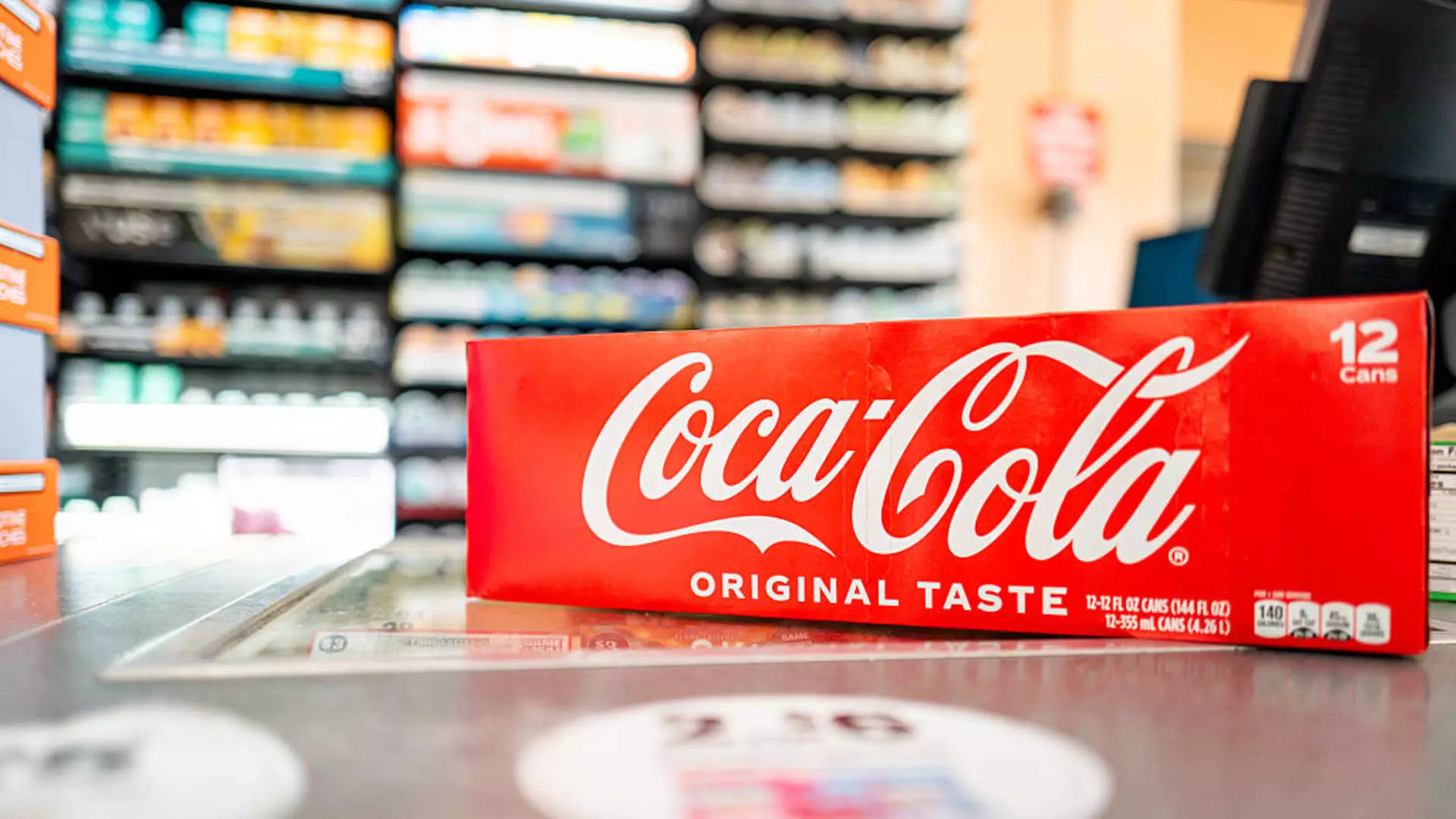Coca-Cola’s latest earnings report offers a complex narrative that demands a skeptical eye. Despite surpassing expectations with a modest bump in revenue and earnings, the underlying story reveals a fragile balancing act taking place behind the scenes. The fact that the company’s shares dipped less than 1% upon release suggests investors are cautiously optimistic, but not convinced that the foundation is solid. It’s tempting to see this as a sign of strength, yet beneath the surface, clear indicators of vulnerability emerge, particularly in how consumer demand is buckling under economic pressures.
The company’s ability to beat analyst forecasts—adjusted earnings per share of 87 cents versus an expected 83 cents and revenue nudging slightly above estimates—may seem impressive at first glance. But this narrowly positive performance masks deeper issues, especially when viewed through the lens of declining volumes in key markets. As a global leader, Coca-Cola’s fortunes are intertwined with broader economic realities: inflation, geopolitical tensions, and shifting consumer values. The so-called “beat” reflects resilience in certain regions but doesn’t guarantee long-term stability, especially as volume shrinkages hint at weakening consumer engagement.
Trading Volume Decline and Regional Disparities
A more sobering metric is Coca-Cola’s global unit case volume—a vital indicator of actual consumer demand—which declined by 1%. While the European, Middle Eastern, and African markets bucked the trend with a 3% increase, the American and Asian markets tell a different story. North American volume slipped by 1%, and Latin America experienced a 2% drop, compounded by a 4% decline in the company’s juice and dairy divisions. These figures are not isolated blips, but reflections of shifting consumer behaviors driven by economic stresses and social perceptions.
The European rebound, partially driven by strategic initiatives, offers a glimmer of hope, yet it’s hardly enough to mask the overall decline. The divergence between regions underscores the uneven impact of global economic upheaval. Coca-Cola’s effort to diversify its beverage portfolio—evidenced by launches of water, coffee, and plant-based drinks—demonstrates a desperate attempt to adapt. Still, the persistent volume depletion reveals that, despite innovation, the core product remains vulnerable to changing tastes, health concerns, and affordability constraints.
Consumer Confidence and Market Realities
CEO James Quincey’s comments about improved volumes in the U.S. and Europe hint at some stabilization, but they are not proof of a robust recovery. Instead, they indicate a market teetering on the edge, still grappling with economic uncertainty. Quincey’s remarks about targeted marketing towards lower-income consumers and the focus on affordability are admissions that traditional loyalists and middle-class segments are under threat. Coca-Cola’s strategy to appeal to distressed consumers, while necessary, raises questions about whether this approach can sustain long-term growth without eroding premium brand perceptions.
The social media controversy involving accusations about reporting undocumented workers may have temporarily dampened sales in the Latin American region. Although the company claims to have moved past the episode, it underscores how fragile the company’s brand reputation can be when social and political issues intertwine with corporate operations. Such incidents may seem minor, but they influence consumer trust and loyalty in nuanced ways.
The Illusion of Resilience and the Road Ahead
Coca-Cola’s decision to introduce a cane sugar version of its flagship cola in the U.S. highlights the company’s recognition of shifting consumer preferences—particularly in a health-conscious era. However, this move also signifies a recognition of stagnation within its primary product line. While organic revenue growth projections of 5-6% for 2025 seem promising, the reality is that the company’s core soft drink segment is shrinking globally.
Adjusting expectations to a narrower earnings growth range signals an awareness that sustainable growth will be elusive without radical innovation or market expansion. Yet, such optimism must be tempered with skepticism: the global soft drink landscape is increasingly competitive, featuring healthier alternatives, declining soda consumption, and a consumer base that demands more than just brand familiarity. Coca-Cola’s strategic pivot still faces the challenge of converting volume declines into profitable growth.
In essence, Coca-Cola’s recent earnings reveal a company wrestling with its identity in an evolving world. It remains a resilient brand but one increasingly vulnerable to macroeconomic headwinds and social shifts. The short-term gains are encouraging, yet they veil the deeper question: how sustainable is a model built on traditional beverages in a society shifting away from sugary sodas? Coca-Cola’s story is still being written, but the signs of strain are unmistakably becoming clearer with each quarterly report.

